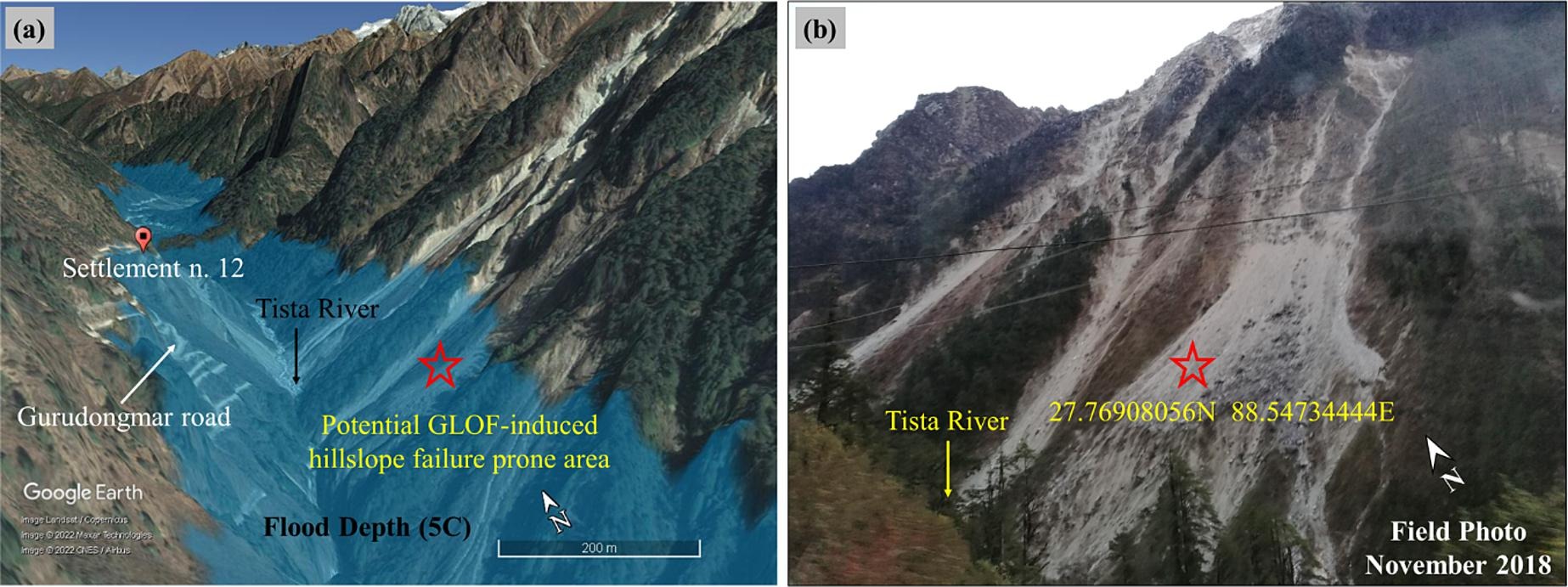This study focuses on modeling glacial lake outburst floods (GLOFs) in the Eastern Himalayas, specifically from the Gurudongmar Lake Complex (GLC) in the Sikkim Himalayas. The research integrates advanced physical breach modeling using TELEMAC-2D and SISYPHE with 1D flood routing via HEC-RAS. The objective is to assess potential GLOF hazards under different breaching scenarios and evaluate downstream flood exposure in settlements along the Tista River. By incorporating field data, remote sensing inputs, and sensitivity analyses, the study provides detailed predictions of peak flood discharges, flood depths, and flow velocities.
The findings indicate that the GLC, comprising four interconnected lakes, poses a significant flood risk, particularly under scenarios of combined lake outbursts. For example, an 80% dam breach of GL-2 or GL-3 combined with GL-1 could result in peak flood discharges exceeding 8882 m³/s. Downstream settlements like Thangu Valley and Chungthang town face the highest exposure due to their size and infrastructure density. The study also highlights that flood risks increase with greater moraine breaching and interconnected lake dynamics, emphasizing the cascading effects of such outburst events.
This research underscores the importance of robust GLOF modeling to mitigate flood risks in vulnerable high-altitude regions. It advocates for improved monitoring, emergency planning, and infrastructure resilience to minimize potential damages. Future studies are encouraged to extend these methodologies to other glacial lake systems, considering climate-induced glacier retreat and lake expansion trends.
The article Erosional dam breach modelling for multi-glacial lake outburst process and downstream flood exposure assessment in the Eastern Himalayas was published in Journal of Hydrology Volume 649, March 2025, 132417 by Arindam Chowdhury, Sazeda Begam, Tomáš Kroczek, Vít Vilímek, Milap Chand Sharma, Sunil Kumar De (https://doi.org/10.1016/j.jhydrol.2024.132417).

